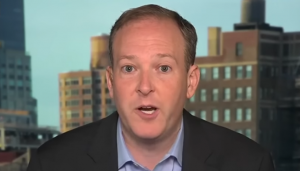Major equity indices ended the week slightly lower as US Fed chair Jerome Powell in his speech at the Jackson Hole conference hinted that the Federal Reserve will need to hike key interest rates in upcoming meetings to combat rising inflation. The Sensex and the Nifty closed above 58,800 and 17,500 levels respectively for the week ended Friday, September 2, 2022.
The Sensex slipped 30.54 points or 0.05% to 58,803.33 while the Nifty fell 19.45 points or 0.11% to 17,593.45. The BSE Small-Cap index surged 1.35% to conclude at 28,800.82.
Also Read| Adani Enterprises to replace Shree Cement on NSE’s Nifty 50 index
How equity benchmarks performed on a weekly basis:
The key indices settled broadly lower due to weak global sentiments. The Sensex dropped 861.25 points or 1.46% to 57,972.62 while the Nifty fell 246 points or 1.40% to 17,312.90.
The major market indices rose nearly 3% mirroring favourable global trends. The Sensex increased 1,564.45 points, or 2.70%, to 59,537.07. The Nifty rose 446.40 points, or 2.58%, to 17,759.30.
Also Read| Pallonji Mistry: All you need to know about Cyrus Mistry’s father
Due to Ganesh Chaturthi, the Bombay Stock Exchange (BSE) and National Stock Exchange (NSE) were closed on Wednesday, August 31, 2022.
Local stock indices closed sharply down mirroring negative global indications. The Sensex fell 770.48 points, or 1.29%, to 58,766.59. The Nifty dropped 17,542.80 points, or 1.22%, to 216.50 points.
The key equity indices closed Friday’s session nearly flat following a choppy session. The Sensex increased 36.74 points, or 0.06%, to 58,803.33. The Nifty slid 3.35 points, or 0.02%, to 17,539.45.
Also Read| India vs China: How many aircraft carriers do they have?
What happened in the Global markets:
The Reserve Bank of India has issued monthly statistics on India’s overseas trade in services for the month of July 2022. According to the report, India’s service exports increased by 20.2% year on year to $23.26 billion in July 2022. The July figure is lower than June 2022. Services exports were $25.29 billion a month ago.
The GDP growth rate in India increased to 13.5% in April-June from 4.1% in the previous quarter, according to figures issued on August 31 by the Ministry of Statistics and Programme Implementation. A positive base effect and the continued economic rebound drove the substantial increase in growth.
The commerce ministry said on August 31, 2022, that India’s eight core sectors gained 4.5% in July, down from an upwardly revised 13.2% in June. In July, output increased in six of the eight core sectors. According to the ministry, these sectors include coal, refinery products, electricity, fertilisers, cement, and steel.
The seasonally adjusted S&P Global India Manufacturing Purchasing Managers’ Index (PMI) was little-changed from July’s reading of 56.4, posting 56.2 in August 2022. It was the second-strongest improvement in operational conditions since November of last year.
According to official data, the gross GST revenue collected in August 2022 is Rs 1,43,612 crore, of which CGST is Rs 24,710 crore, SGST is Rs 30,951 crore, IGST is Rs 77,782 crore (including Rs 42,067 crore collected on imports of goods), and cess is Rs 10,168 crore (including Rs 1,018 crore collected on imports of goods).
Also Read| What is Social Stock Exchange; how organisations can list on it?
A private survey’s findings revealed that industrial activity in China decreased in August. The Caixin/Markit Manufacturing Purchasing Managers’ Index for August was 49.5, down from 50.4 in July. Profits at China’s industrial companies decreased 1.1% year on year in January-July, wiping out the 1% gain recorded in the first six months, according to the National Bureau of Statistics on Saturday.
Japan’s jobless rate according to official figures remained constant in July at 2.6%, in line with estimates and for the third consecutive month.
Also Read| Gautam Adani now the world’s 3rd richest person, Mukesh Ambani at 11th spot
Manufacturing in the United States increased gradually in August, while factory activity in China, the eurozone, and Britain declined as Russia’s war in Ukraine and China’s zero COVID-19 restrictions continued to impact enterprises, according to surveys released on Thursday. The Institute for Supply Management (ISM) said on Thursday that its indicator of US factory activity remained constant at 52.8 in August, being the lowest reading since June 2020.
In his Jackson Hole speech, US Federal Reserve Chair Jerome Powell stated that the central bank will not surrender in its fight against rising inflation. Fed Chair has cautioned that increasing interest rates will bring “some pain” to the US economy, adding that higher interest rates are likely to last “for some time.” He stated that the Fed’s September decision “will be based on the totality of the incoming data and the developing outlook.”
Also Read| Cyrus Mistry, former chairman of Tata Sons, killed in road accident
The S&P Global/CIPS manufacturing PMI in the United Kingdom was 47.3 in August. The reading remains the worst month for British factories since May 2020, as the country grapples with a severe cost of living crisis.
The German government declared a 65-billion-euro ($65-billion) plan on Sunday to reduce the strain on families as Russian gas supplies wane and energy prices rise. The declaration follows two earlier relief packages totalling 30 billion euros, which included a cut in the tax on petrol and a popular massively subsidised public transportation ticket.






